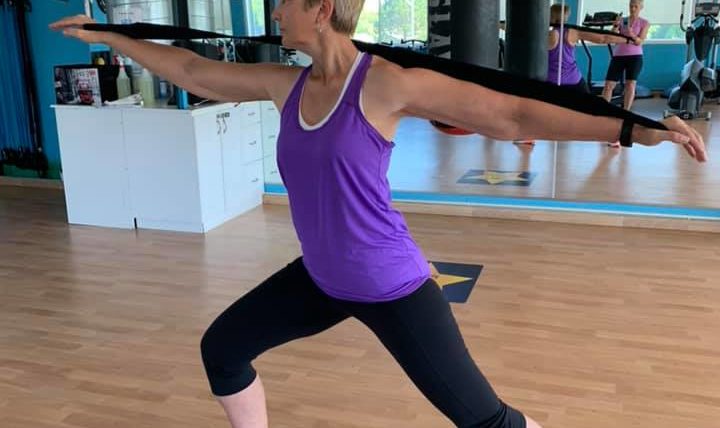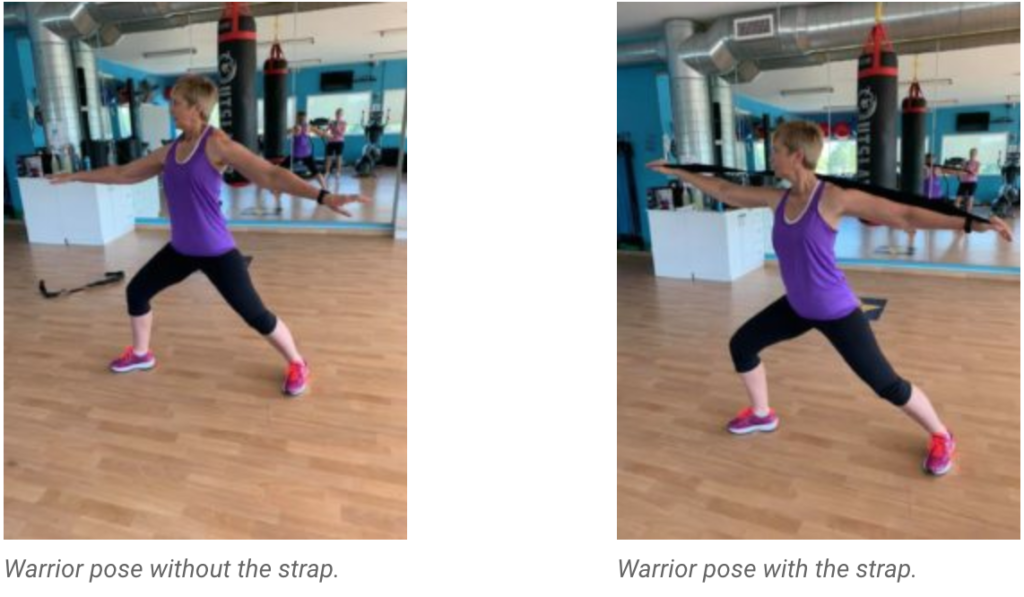
by Faye Flatt, Ontario, Canada
Yoga has always looked effortless to me and I enjoy watching the gentle movements from one pose and smooth transition to another. In my head it looked like something I could do. So a couple years ago I decided to try it. The instructor was a friend and encouraged me. I assumed—mistakenly—that she would go a little slower and give me some guidance. That didn’t happen. It was nothing like I expected at all! I tried but failed miserably. By the time I finished one move, I was three behind. It was frustrating.
My friend moved away and I didn’t think more about it until I saw that a few people on the “Getting Physical with FSH” practiced yoga on a regular basis. That planted the seed in my head that said, “if others with FSHD could do it, so can I.” I decided to download an app and try it again at my own pace.
“Getting Physical with FSH” is a Facebook group I started almost three years ago for patients and caregivers to support and motivate one another on how to get and maintain active through physical exercise to help maintain mobility. It is often necessary for us to modify exercises so we can avoid injury and help build strength while avoiding compromising our muscles further. This group is a safe place for us to do that and help one another so we can live the most active lifestyle possible. I established the group in December of 2016 and we now have close to 600 members.
Just before Christmas last year, I found out that my gym had a new yoga instructor so I decided to go. Luckily for me, he was recovering from a broken arm so he had to go slow and be methodical with his moves. This helped me a lot because he had to modify some movements and I was able to keep up with him in most things.
The exception was any of the movements or poses that required lifting the arms upward while standing, such as “the warrior,” a pose I really liked the look of and wanted so badly to do. But try as I might, I wasn’t able to hold my arms as high as I wanted. And it hurt because my shoulders felt like they were pushed forward and compromised.
I knew that if I held onto something with both hands I would be able to raise them overhead. I had some nylon strapping left over from a project so I decided to see what I could make to use as an assist to stabilize my shoulders. My husband helped me by measuring the exact distance from one hand to the other as I lay down with arms outstretched on either side. I sewed a loop at both ends and it was ready to try.
With one hand in each of the loops, I am now able to push on the ends of each loop which steadies my arms and stabilizes my shoulders so they are more secure and less prone to injury. Here are before and after photos to show you the difference. And check out my video below that shows how the strap works in practice.



Hi Faye and thanks for the tip! Where did you get your strap? Did you hand stitch the loop with a heavy duty needle?
Keep up the good work!
Hi Faye. It’s 2024 now, over 4 years later. How did the strap do for you?